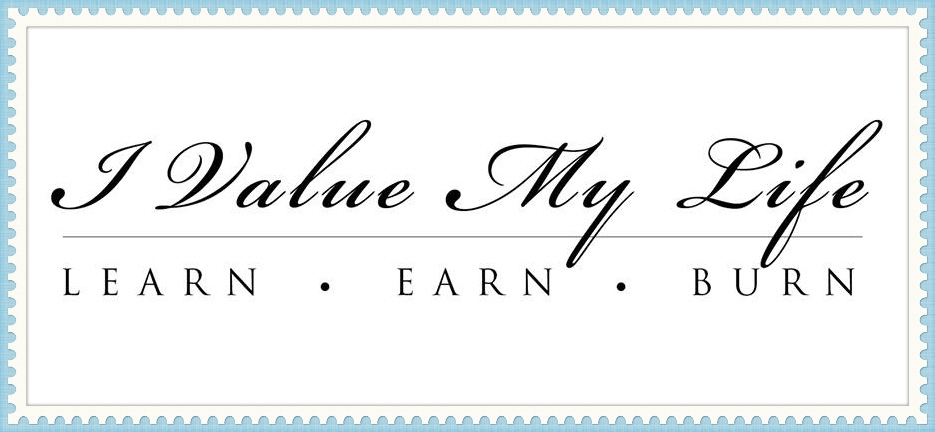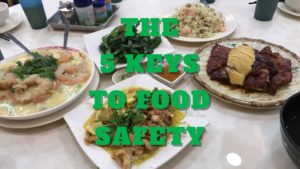The Centre for Food Safety of Hong Kong shares the World Health Organisation’s advocacy in disseminating the 5 keys to food safety. They made them simple and effective to create awareness amongst all of us. And to involve us without haste.

WHAT ARE THE 5 KEYS TO FOOD SAFETY?
CHOOSE (Choose safe raw materials)
SEPARATE (Separate raw and cooked food)
CLEAN (Keep hands and utensils clean)
COOK (Cook thoroughly)
SAFE TEMPERATURE (Keep food at safe temperature)
Let me cite some practical tips based on their booklet that could help you apply these 5 Keys in daily life. Starting from the moment you purchase, store, prepare, cook all the way to management of leftovers. Yes, these processes should not be looked over because these are part of ensuring yourself of a healthy meal.
As you purchase, choose from the market and supermarkets:

- Buy food from hygienic and reliable shops.
- Don’t buy food from illegal hawkers or questionable source, e.g. food of unreasonably low priced or meat with abnormal red colour.
- Select fresh and wholesome food: (1) Fruits or vegetables are not damaged and without bruised areas, (2) Canned foods are not bulging or dented or jars are not cracked or have loose lids, (3) Eggs in the carton are not cracked or leaking.
- Choose ready-to-eat, cooked or perishable foods that are stored correctly, e.g. sushi from supermarket should be stored at 4 deg C or below, frozen chicken should be stored at -18 deg C or below.
- Do not use food beyond its expiry date, which may be either in the form of “use by” or “best before” date.
How do we know the difference between “use by” and “best before” dates? Here are some comparisons.
 Example of food:
Example of food:
A cup of ice-cream: “use by” date
A pack of biscuit: “best before” date
Example of Expiry date: 1-1-2008
A cup of ice-cream: If the food is properly stored, it is recommended for use on or before 1-1-2008
A pack of biscuit: If the food is properly stored, it can be expected to retains its specific properties on or before 1-1-2008
Recommendations after the Expiry date:
A cup of ice-cream: Usually, the food is highly perishable. If you consume it after the date, there is a chance that you will suffer from food borne disease.
A pack of biscuit: If you consume it after the date, the food may not be at its best flavour and quality
WHEN SEPARATING!
- Pick up your packaged and canned food first, shop for raw meat, poultry and seafood last.
- Keep raw meat, poultry, and seafood separated from other food items in your grocery cart and shopping bags to prevent their juices from contaminating other food items.
Tip: In Hong Kong, consumers are given of one whole plastic (for free) for frozen foods if the amount calls for it. You will notice that the cashiers wouldn’t shift any pre-packed foods to where the frozen foods are. This is to make sure separation of the canned food, toiletries and packaged food from getting contaminated when its juice seeps out. They are very strict about that here in Hong Kong.
STORE
WHAT IS THE SAFE TEMPERATURE TO STORE YOUR FOOD IN?
- Refrigerate cooked and perishable food within 2 hours.
- Check the temperature of the refrigerator with a thermometer and make sure the fridge is kept at or below 4 deg C and freezer at or below -18 deg C.
- Do not overstuff your refrigerator.
PRACTICE SEPARATION ONCE AGAIN AS YOU STORE.
- In the refrigerator:
- Store food in containers with lids to avoid contact between raw food and ready-to-eat food or cooked food. Close lids tightly and surely when piling it up altogether inside the refrigerator. It is important not to just stack them because it might fall out accidentally. Here is a link I like on points to remember in organising the refrigerator.
- Store raw meat, poultry and seafood below ready-to-eat food or cooked food to prevent juices from dripping onto ready-to-eat food or cooked food.
AS YOU PREPARE…
CLEAN – Always start with a clean scene.
A. Keep yourself clean:
- Wash hands. (1) Before handling food and often during food preparation. After handling raw meat or poultry and before eating. (2) After blowing nose, handling rubbish, going to the toilet, changing nappies, playing with pets and smoking.
- Make sure you use soap when you wash your hands. Ideally, duration lasts for 20 seconds. (1) Scrape excess food into a rubbish bin. A clean cloth or brush (sponge is not recommended) to remove leftovers and grease. (2) Rinse in clean hot water. (3) Leave cutting boards, dishes or utensils to air-dry, or wipe with a clean dry cloth. (4) Caution yourself with gloves if your hands are sensitive to temperature and dishwashing agents.
B. Keep the environment clean: Make sure it is kept away from insects, pests and other animals.
- Tightly cover the food as you keep it in closed containers.
- Keep rubbish bins covered or in closed containers.
- Keep food preparation areas in good condition, e.g. repair wall cracks or holes.
- Use baits or insecticides to kill pests but take care not to contaminate food.
- Keep pets away from kitchen.

SEPARATE – Use separate utensils to handle raw food and cooked food or ready-to-eat food such as poached chicken or fruits. Use one utensil to taste and another to stir or mix food.
- Label utensils (including cutting boards and knives) with different colours, e.g. Red – raw food, Blue – Cooked food, Green – Ready-to-eat food
COOKING – This process involves a lot of ways. There’s roasting, poaching, boiling, sautéing, and broiling. Here are some points to remember.
- Thaw frozen food in microwave, fridge or under running water before cooking.
- Ideally, use a food thermometer to check that the core temperature of food reaches at least 75 deg C. When you use the food thermometer, make sure you: (a) Place it in the centre of the thickest part of the meat; (b) Make sure it is not touching a bone of the side of the container; (c) Make sure it is clean between each use.
- If you do not have a food thermometer, cook or reheat food thoroughly until it is piping hot throughout and check. (a) For meat and poultry, make sure that juices are clear, not red, blood is not visible when you cut the cooked meat. (b) Egg yolks are not runny or liquid. (c) Bring soups and stews to a boil and continue to boil for at least one minute.
- Stir, rotate and cover food when microwaving to make sure thorough cooking.
Tip: Here’s a good-to-know post about how to check medium rare all the way to a well-done meat, how to arrange the table and 80 Healthiest Foods to Eat.
MANAGEMENT OF LEFTOVERS

Keep it in safe temperature.
- Take food promptly after cooking. Do not leave cooked food at room temperature for more than 2 hours.
- Promptly cool leftovers and refrigerate within two hours.
- Leftovers can be cooled quickly by: (a) slicing large pieces of meat into smaller pieces. (b) Placing food in a cool, clean container. (c) Stirring regularly for soups
- If cooked food are not eaten immediately, keep them piping hot (above 60 deg C) before serving.
- Leftovers should not be stored in the refrigerator for longer than 3 days and should not be reheated more than once.
- Reheat leftovers thoroughly until it is steaming hot before consumption.

